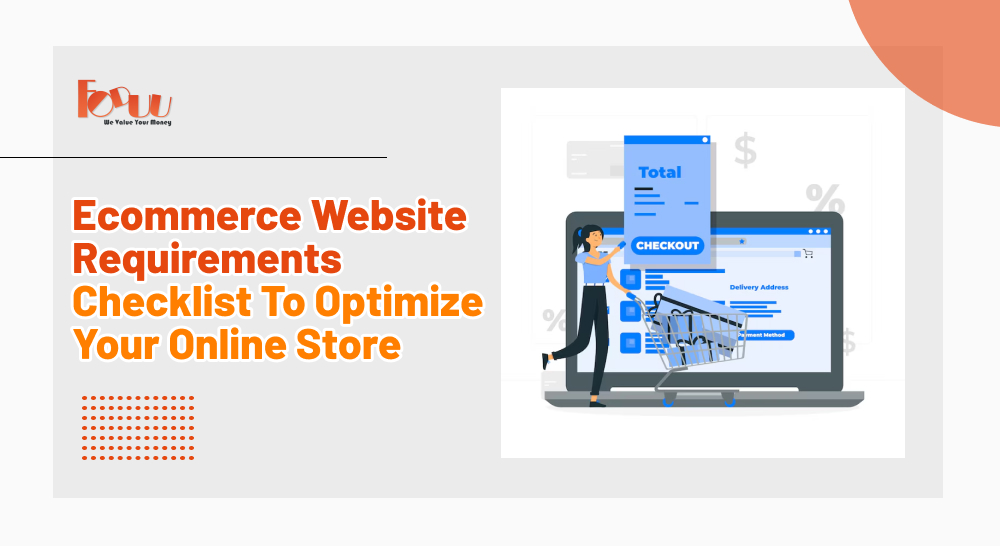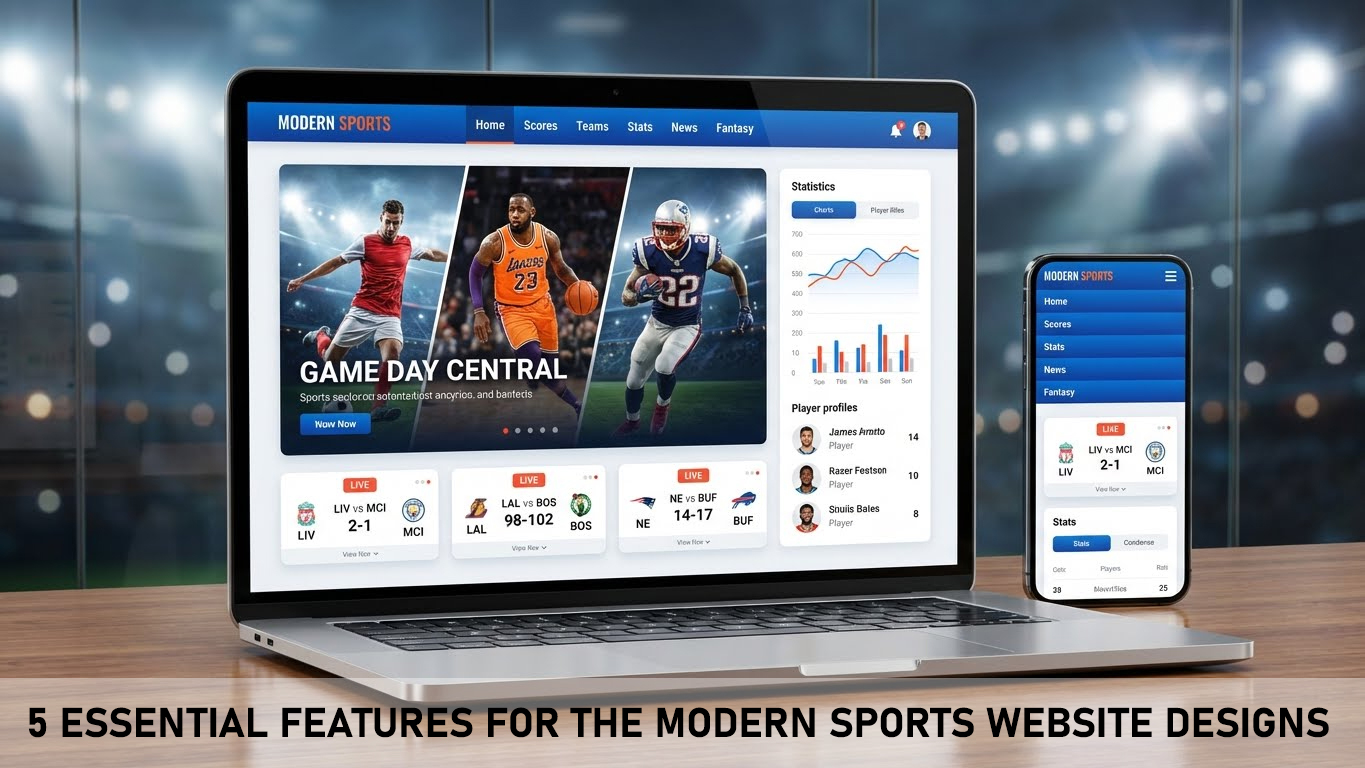Optimize your e-commerce site within this digital-first economy for sure survival and success. What you sell would be less important than how your site functions in delivering what you have on offer. How well the site could bring the customer to the website was the power in attracting more visitors, catching more customers, and getting them to buy well in sales.
The following list can guide you, step by step, through a process that makes an e-commerce website effective:
1. Friendly design
The web design for your company website becomes the first point of interaction of your company brand with potential customers. A user interface on your website will ensure that visitors cannot have much trouble when going to navigate to that part that offers them what they want, so the buyer can make a purchase free from frustration.
Key Requirements:
- It should be responsive and work well on all devices: desktop, tablet, and smartphone.
- Easy Navigation: crystal-clear menus, categories, and search bars guiding the users to their desired products.
- It will load less than 2 seconds because it is utilizing the minimum usage of code, content delivery networks, and optimizing images.
- Should be clean and professional in presentation. Consistent with brand identity design. Visually pleasing layout.
- Accessible Design: t must adhere to Web Accessibility Guidelines like WCAG for the disabled.
2. Secure Payment Options
TSecurity is one of the various important things any e-commerce site should have. A customer should be assured that the payment details are secure.
Key Features:
- SSL Certificate: To encrypt data transmission so that the customer's sensitive information won't leak.
- For example, it needs to be enabled to accept multiple modes of payment, such as MasterCard, Visa, local methods of payment, and digital wallets, including Apple Pay and PayPal.
- The payment system will be PCI compliant, that is to say, in terms of Payment Card Industry Data Security Standards.
- Guest Checkout: Allow users to check out as guests.
3. Effective product management
Product management systems make everything simple and enhance the way to shop.
Key Features:
- Product Pages They will have good images, videos, description details, and specifications.
- Inventory: Automatically track stock levels to avoid overselling or stockouts.
- Product Variants: Enable size, colour, or any kind of variation.
- Customer reviews and ratings: The users can provide their reviews so that credibility could be created.
- CrossSell/Upsell-Recommend Crosssells/Upsells in terms of complements or better versions to enhance Average Order Value.
4. Checkout Made Easier
Checkout is the most critical step while turning visitors into customers. It is too long and complicated; hence, it has led to cart abandonment.
Main Requirements:
- The streamlined checkout flow reduces the number of steps required to fulfill an order.
- Auto-fill and Saved information Auto-fill your address, your saved address, and payment methods.
- Progress Indicators: Inform the user how much further they have in their checkout process. Error-Free Forms: Validate the form inputs and clearly let in case of an error.
- Shipping Options and Cost Multiple shipping options with clearly stated costs.
5. Search Engine Optimization or SEO
A well-optimized e-commerce website increases more opportunities for showing up in a search engine and the possibility of organic traffic reaching your store.
Key Requirements:
- Keyword Research: Optimize product pages, blog posts, and meta tags with relevant keywords. Clean Keyword-Drenched URs Such As the Examples yousite.com/men-shoes.
- Meta Tags and Alt Text. The meta titles, descriptions, and alt texts of images should be correct. Fast Load Speed: The site's speed to load up should be according to the Google Core Web Vitals standards.
- Mobile Optimization: The website has to be mobile-friendly due to the fact that Google favours mobile-first indexing.
6. Marketing tool integrations
Ecommerce websites offer support for marketing tools to attract, retain, and then grow your customer base.
Main Requirements:
- Email marketing Use Mailchimp or Klaviyo integration to automate a campaign and news letter.
- Social Media Sharing: Buttons make it possible for customers to share these products on Instagram, Facebook, and Pinterest.
- Loyalty programs: it rewards a repeat customer with discounts, points, or special preferences.
- You can use promotional banners to display offers, sales, and new arrival information on your homepage and category pages.
- Affiliate marketing: Turn on affiliate links and partnerships to reach a wider audience.
7. Analytics and Reporting
Track and analysis will guide you in making well-informed decisions to make the online store continually improve over time.
Major Needs:
- It tracks all traffic sources and user behaviour with the conversion rate.
- Ecommerce tracking supports more advanced metrics like revenue, average order value, and cart abandonment.
- Custom Dashboards: Sales performance reports, most popular products, and customer demographics reports.
- A/B Testing: Testing elements of the website, headlines, buttons, to optimize conversions.
8. Mobile Optimization
As the mobile commerce trend is becoming common, no one can make that an excuse to ensure his site is mobile-friendly.
Key Requirements:
- Mobile responsive design: It adapts the structure of content across all screen sizes.
- Touch-Friendly Features: Use large buttons, clear menus, and swipable gestures wherever appropriate.
- Mobile payment options: The company must provide mobile wallets and mobile payment applications to make transactions frictionless.
9. Customer Support Tools
Good customer care is confidence and eventual satisfaction for the customers.
Key Requirements:
- Live Chat Support: The live support should be offered through chatbots or live agents. All the frequently asked questions should be there in the FAQs section.
- Contact Forms and Support Tickets: The users can raise their issues and track the responses.
- Return and Refund Policy: Describe it in such a way that it won't run off any customers from purchasing from you.
10. Scalability and performance
Your e-commerce platform should scale for the sudden spike in traffic or future growth.
Major Requirements:
- Scalable hosting: Hosting solutions have to absorb spiked traffic.
- Use CDN: Publish your content on a network of distributed servers and make your website's speed faster. These regular updates to the website's platform, themes, and plugins should help in the enhancement of security as well as performance.
Conclusion
Creating as well as optimizing the building of the e-commerce site is extremely minuscule and is very important to make it an experience towards user-friendliness besides about the edge-cutting technologies. As per these check lists, a person can even develop online stores where they can attract visitors by making them loyal customers. With that in mind, if you keep constantly updating your site, because that's what analytics and what feedback from the customers show you to implement, then you will be ahead in the race of e-commerce. So let's follow these best practices mentioned by the professionals at FODUU, implement them and see your online store bloom via increased engagement, customer satisfaction, and sales growth.




